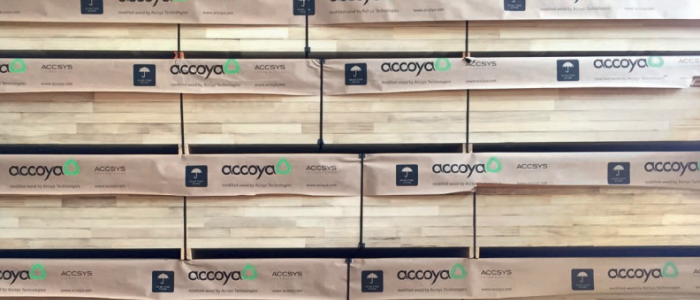Finger jointing is an excellent method of upgrading low grade material into valuable, strong timber that performs will in a number of structural and non-structural uses.
In this guide, we’ll look into the process of finger jointing and why using this method with Accoya® makes for the perfect match.
What does finger-jointed mean?
A finger joint is a woodworking joint made by gluing shorter pieces of timber end-to-end that have several tapered “fingers” into long pieces – hence the name “finger-joint.”
While finger-jointing has been around for many years, mainly used to utilize offcuts of timber, today it’s used to join pieces of timber together to provide a top quality engineered product, such as Accoya®.
Most finger jointed timber is of a high grade because defects are removed during the manufacturing process and utilize the good lengths in-between, producing a fine quality product. Finger jointing keeps waste down, and the lengths can be specified and produced to what the client requires, reducing fitting times and expense.
The purpose of structural finger joints is to maintain the strength of a piece of timber over its full length. Finger-jointing provides a greater degree of stability compared to a large, single length of timber, which can be prone to distortion.
What about Accoya®?
The technology behind Accoya® is based on wood acetylation, a process that has been studied by scientists for more than 75 years and proven to be an outstanding method of improving the Technical properties of wood.
The process essentially alters the actual cell structure of wood by transforming free hydroxyl groups into acetyl groups. Acetyl groups simply consist of hydrogen, oxygen and carbon and are already present in all wood (ranging from 1 per cent to 8 per cent by weight) and can be derived independently from acetic acid, such as vinegar. Thus, the process does not introduce anything to the wood that does not naturally occur in it.
5 benefits of finger-jointed Accoya®
Acetylated wood, such as Accoya®, can be glue laminated and finger-jointed. Accoya® finger jointed is bonded with EPI adhesive. It offers fixed width, engineered sections for joinery under the KOMO joinery certificate for finger joint quality.
Below we’ve highlighted just some of the benefits, but for more specifications you can check out the Accoya® brochure here.
- Modified all the way through, not just at the surface layer like many alternative treatments, so it has outstanding durability and dimensional stability, meaning that it requires significantly less maintenance.
- Completely knot free and there are no exposed unacetylated surfaces in any dimension, which eradicates the need to apply additional chemical preservatives on-site, as is necessary with unmodified or envelope treated woods.
- High performance wood, ideal for outdoor use and challenging applications.
- Indigestible to a wide range of insects, including termites
- Non-toxic and 100% recyclable, so it doesn’t contribute to the amount of landfill.
And you?
If you want any more information on the benefits of Accoya, be sure to check out our blog or get in touch with any questions.
As always, we’re on Facebook and Twitter should you wish to share any thoughts.
